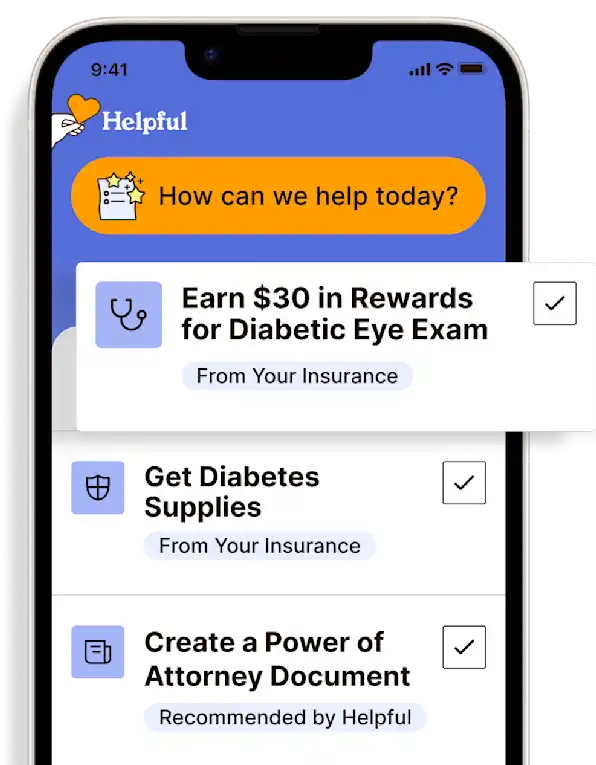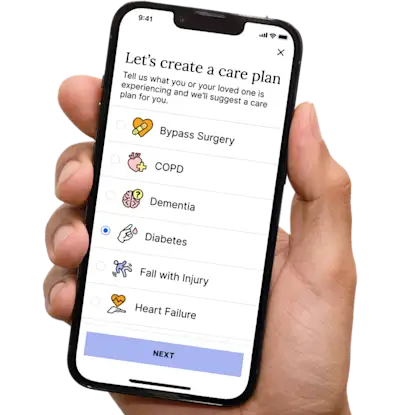Wellcare CalViva Health Dual Align (HMO D-SNP): Hospice Care
Treatment and support at home for those with advanced illness approaching end of life - when life expectancy is months, not years.
Access all my benefitsGet insurance benefits, legal documents, and medical records in one place
How To Receive
Details on how to apply
When you enroll in a Medicare-certified hospice program, your hospice services and your Part A and Part B services related to your terminal prognosis are paid for by Original Medicare, not the plan.
Upon provider prognosis of a life expectancy of 6 months or less, determine the desire for hospice care.
Hospice care is not automatic, it must be elected.
There are support options for those who do not feel ready for hospice, including a hospice consultation visit.
If electing hospice, obtain a network provider qualification for hospice care.
Select a network hospice service.
Contact the hospice agency and schedule a consultation and intake/admission visit.
If the hospice care agency selected receives the election directly, it will make first contact.
Schedule visit cadence and commence with hospice services.
Get more support and guidance on insurance benefits, medical records and legal forms.
Helpful brings together your insurance benefits, legal documents, and medical records in one personalized place — so you always know what you have, and never have to search again.

Hospice is comprehensive, compassionate care focused on providing physical relief and emotional support for individuals with advanced illnesses. Its main goals are to ensure comfort, enhance the quality of life, and preserve dignity and choice so that life can still be lived as fully and comfortably as possible as its end approaches. Hospice focuses on the relief of pain and disruptive symptoms while attending to emotional and spiritual needs. No curative treatment is sought for the terminal illness and no resuscitation is performed in the event of cardiopulmonary arrest. Hospice care prioritizes comfort and quality of life by reducing pain and suffering.
Hospice does not mean that all treatment is withdrawn. Medications for existing conditions are still administered, provided the recipient can take them, and medications for symptom management may even be added. Likewise, should an immediate illness or injury occur unrelated to the terminal illness, such as an infection or broken bone, it will be treated. Otherwise, exacerbations of the terminal illness will be managed with therapies and medications intended to deliver relief and comfort and not with aggressive efforts such as those performed in hospitals.
People are eligible for hospice care once their provider has determined that the remaining life expectancy is 6 months or less should the illness be allowed to run its normal course (i.e., without aggressive treatments).
Covered services include drugs for symptom control and pain relief, short-term respite care (for caregivers), and home care. The health plan will pay for hospice services and any Part A and Part B services related to the terminal prognosis, as well as continue to provide coverage for services not covered under Medicare Part A or B or not related to the terminal prognosis. If non-emergency, non-urgent services are needed that are covered under Medicare Part A or B and not related to the terminal prognosis, the cost for these services depends on the use of a network provider (i.e., in-network versus out-of-network cost-sharing).
If non-hospice care is required, that is care not related to the terminal prognosis, contact the health plan for authorization and arrangement.
Technology for Health Tasks. Mental Health for the Tough Stuff.
Helpful connects your medical records, insurance, and caregiving tasks automatically. And when you need more than logistics, a therapist is here to guide you.
In-Network and Covered
For Individuals, Couples and Families
HIPAA Compliant, Data Stays Private


Healthcare Tasks Simplified

From syncing records to spotting drug interactions, Helpful does the heavy lifting, turning complex health info into clear tasks and showing you benefits you can actually use, giving you clarity and control over your care.

In-Network Mental Health

Our licensed therapists are here to support you and your loved ones through stress, burnout, and life’s hardest moments, with an inclusive, compassionate approach that works with most insurance plans.

Create Legal Documents

Plan ahead by creating will, trusts, advance directives and more, that ensure your wishes are honored in the event you can’t speak for yourself -with Helpful guiding you every step of the way.